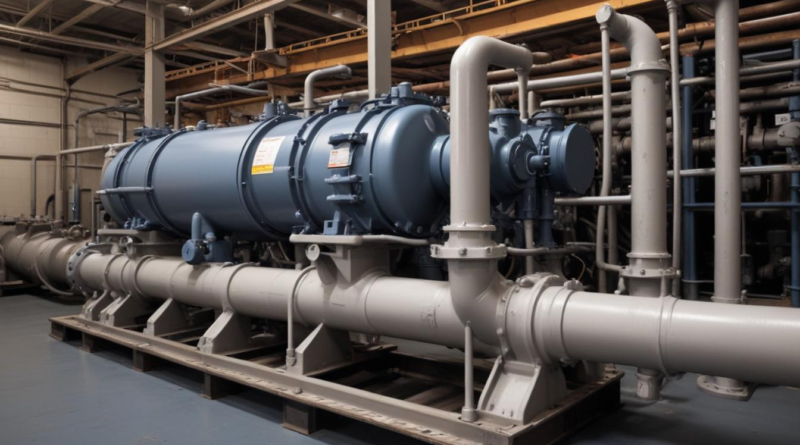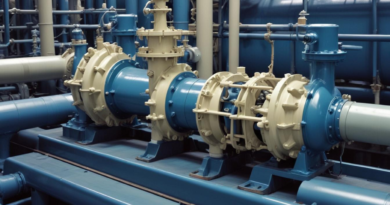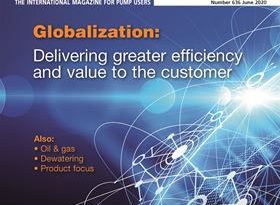how to select a pump for explosive environments
Understanding explosive environments is crucial for ensuring safety and the effective operation of industrial processes. An explosive environment is characterized by the presence of a flammable substance in the form of gas, vapor, mist, or dust, which can ignite when exposed to an ignition source. These environments are prevalent in industries such as oil and gas, chemical manufacturing, pharmaceuticals, and mining.
Several factors contribute to the classification and assessment of explosive environments:
- Flammable Substances: Identification of the type and concentration of flammable gases, vapors, or dusts present.
- Ignition Sources: Determining potential sources that could initiate an explosion, including electrical equipment, mechanical sparks, and static electricity.
- Environmental Conditions: Evaluating temperature, pressure, and ventilation, which can influence the likelihood of an explosive atmosphere.
- Area Classification: Categorizing zones based on the frequency and duration of the presence of explosive atmospheres. Common classifications include:
| Zone | Description |
|---|---|
| 0 | Area where an explosive atmosphere is continuously present or frequently present. |
| 1 | Area where an explosive atmosphere is likely to occur in normal operation. |
| 2 | Area where an explosive atmosphere is not likely to occur in normal operation and, if it does, will exist only for a short period. |
Understanding these classifications aids in the selection of appropriate equipment, such as pumps designed for explosive environments. When selecting explosive environment pumps, it is essential to consider:
- Intrinsic Safety: Ensuring that the pump design minimizes the risk of ignition.
- Material Compatibility: Choosing materials that can withstand the corrosive or abrasive nature of the substances being handled.
- Certification: Verifying that the pump meets relevant safety standards and certifications for explosive atmospheres.
- Maintenance Requirements: Selecting pumps that are easy to maintain without compromising safety.
By thoroughly understanding the characteristics of explosive environments, industries can implement effective safety measures and optimize the performance of their pumping systems, thereby mitigating risks and ensuring operational continuity.
selecting pump types
When selecting the appropriate pump type for explosive environments, it is essential to evaluate the specific requirements of the application to ensure both safety and operational efficiency. Various pump technologies are available, each with distinct features and suitability for different hazardous conditions.
Common Pump Types for Explosive Environments:
- Centrifugal Pumps: Ideal for handling large volumes of fluids with low viscosity. They operate using rotational kinetic energy to move liquids, making them suitable for continuous flow applications.
- Positive Displacement Pumps: These pumps deliver fluids at a constant rate regardless of the system pressure. They are well-suited for applications requiring precise dosing or handling viscous substances.
- Diaphragm Pumps: Utilizing a flexible diaphragm, these pumps are excellent for handling corrosive or abrasive fluids. Their design minimizes the risk of leaks, enhancing safety in explosive atmospheres.
- Gear Pumps: Known for their reliability and ability to handle high-pressure applications, gear pumps are suitable for transferring oils and other lubricants in hazardous settings.
- Screw Pumps: These pumps offer smooth and continuous flow with minimal pulsation, making them ideal for applications where maintaining a steady flow rate is critical.
Factors to Consider During Pump Selection:
- Explosion Protection Rating: Ensuring the pump has the appropriate certification, such as ATEX or IECEx, which indicates suitability for specific explosive zone classifications.
- Material Compatibility: Selecting pumps constructed from materials that resist corrosion and wear, especially when handling aggressive or abrasive fluids.
- Seal Type: Opting for sealed or packed options that prevent the escape of hazardous fluids, thereby mitigating the risk of ignition sources.
- Maintenance Accessibility: Choosing pump designs that allow for easy maintenance without exposing operators to hazardous environments.
- Energy Efficiency: Evaluating the pump’s energy consumption to ensure cost-effectiveness and sustainability in long-term operations.
Comparison of Pump Types:
| Pump Type | Advantages | Limitations | Ideal Applications |
|---|---|---|---|
| Centrifugal Pumps | High flow rates, simple design | Less effective with high-viscosity fluids | Water transfer, chemical processing |
| Positive Displacement Pumps | Consistent flow, precise dosing | Potential for pulsation, higher maintenance | Pharmaceuticals, food processing |
| Diaphragm Pumps | Leak-free operation, handles corrosives | Lower pressure capabilities | Chemical handling, wastewater treatment |
| Gear Pumps | Reliable under high pressure, compact | Sensitive to fluid contamination | Lubricant transfer, fuel systems |
| Screw Pumps | Smooth flow, low pulsation | Higher initial cost | Oil and gas, food and beverage |
Selecting the right pump involves a comprehensive assessment of these factors to ensure that the chosen solution not only meets the operational demands but also upholds the highest safety standards required in explosive environments. Proper selection reduces the risk of equipment failure, minimizes downtime, and safeguards personnel and assets.
material and construction considerations
Selecting the appropriate materials and ensuring robust construction are paramount when designing pumps for explosive environments. The harsh conditions and the presence of flammable substances necessitate meticulous attention to material properties and structural integrity to ensure safety and reliable operation.
Key Material Considerations:
- Corrosion Resistance: Materials must withstand corrosive substances commonly found in explosive environments. Stainless steels, such as 316L, and specialized alloys like Hastelloy offer excellent resistance to a wide range of chemicals.
- Compatibility with Fluids: Ensuring that the pump materials are chemically compatible with the fluids being handled prevents degradation and extends the lifespan of the equipment.
- Structural Integrity: High-strength materials are essential to maintain the pump’s integrity under high pressure and temperature conditions, reducing the risk of mechanical failure.
- Explosion-Proof Design: Components should be designed to contain any potential explosions within the pump housing, preventing the ignition of external environments.
- Sealing Solutions: High-quality seals and gaskets made from materials like Viton or PTFE ensure leak-free operation, minimizing the risk of hazardous substance release.
Construction Features Enhancing Safety:
- Welding and Fabrication Quality: Precision in welding and fabrication processes ensures that joints and connections are free from defects, which is critical in preventing leaks and maintaining structural integrity.
- Surface Finishes: Smooth surface finishes reduce the accumulation of corrosive agents and make cleaning easier, thereby maintaining the pump’s performance and safety.
- Component Redundancy: Incorporating redundant safety features, such as secondary seals or backup power systems, enhances the overall reliability of the pump.
- Thermal Management: Effective thermal management systems prevent overheating, which can degrade materials and increase the risk of ignition in explosive atmospheres.
- Modular Design: A modular construction allows for easier maintenance and replacement of parts without requiring extensive downtime, ensuring continuous safe operation.
Material Comparison:
| Material | Advantages | Limitations | Common Applications |
|---|---|---|---|
| Stainless Steel (316L) | Excellent corrosion resistance, durable | Higher cost compared to carbon steel | Chemical processing, oil and gas |
| Hastelloy | Superior resistance to harsh chemicals, high temperature tolerance | Very high cost | Acid handling, pharmaceutical production |
| PTFE | Outstanding chemical resistance, non-reactive | Lower mechanical strength | Seals and gaskets, lining materials |
| Carbon Steel | Cost-effective, high strength | Prone to corrosion without proper treatment | Hydrocarbon handling, general industrial use |
| Viton | Excellent temperature and chemical resistance | Can degrade under UV exposure | Seals, gaskets, O-rings |
Advanced Construction Techniques:
Implementing advanced construction techniques can significantly enhance the performance and safety of pumps in explosive environments. Techniques such as:
- Seamless Manufacturing: Reduces the number of joints and potential leak points, enhancing the pump’s reliability.
- Magnetic Couplings: Eliminates the need for direct mechanical seals, thereby reducing the risk of leaks and contamination.
- Double Encapsulation: Provides an additional barrier against the release of hazardous substances.
By integrating these material and construction considerations into the design and selection process, industries can ensure that their explosive environment pumps not only meet stringent safety requirements but also deliver sustained performance under demanding conditions.
compliance with safety standards
 Ensuring that pumps comply with relevant safety standards is a fundamental aspect of selecting equipment for explosive environments. Adherence to these standards not only guarantees the safety of personnel and facilities but also ensures the reliability and longevity of the pumping systems. Compliance involves understanding and implementing various international and regional regulations that govern the design, installation, and operation of equipment in hazardous areas.
Ensuring that pumps comply with relevant safety standards is a fundamental aspect of selecting equipment for explosive environments. Adherence to these standards not only guarantees the safety of personnel and facilities but also ensures the reliability and longevity of the pumping systems. Compliance involves understanding and implementing various international and regional regulations that govern the design, installation, and operation of equipment in hazardous areas.
Key Safety Standards and Certifications:
- ATEX (Atmospheres Explosibles): A European certification that indicates equipment is suitable for use in potentially explosive atmospheres. ATEX directives classify zones based on the likelihood of explosive atmospheres and prescribe requirements for equipment used in these areas.
- IECEx (International Electrotechnical Commission System for Certification to Standards Relating to Equipment for Use in Explosive Atmospheres): An international certification system similar to ATEX, ensuring that equipment meets global safety standards for explosive environments.
- UL (Underwriters Laboratories): In the United States, UL certifications, such as UL/CSA Class I Division 1, certify that equipment meets safety standards for use in hazardous locations.
- NEC (National Electrical Code): Provides guidelines for electrical installations in hazardous locations in the United States, ensuring that equipment is appropriately rated and installed to prevent ignition sources.
- CSA (Canadian Standards Association): Similar to UL, CSA certifications ensure that equipment used in Canada adheres to safety standards for explosive environments.
Compliance Checklist for Explosive Environment Pumps:
- Identify Applicable Standards: Determine which safety standards apply based on the geographical location and specific industry requirements. For example, ATEX is mandatory for European markets, while UL and CSA are required in North America.
- Verify Certifications: Ensure that the pump has the necessary certifications from recognized bodies such as ATEX, IECEx, UL, or CSA. Certification labels should be clearly visible on the equipment.
- Evaluate Equipment Ratings: Select pumps with appropriate explosion protection ratings, such as Intrinsic Safety (Ex i), Flameproof (Ex d), or Increased Safety (Ex e), based on the classified zone.
- Assess Documentation: Review technical documentation, including certificates of conformity, test reports, and installation guidelines provided by the manufacturer to verify compliance.
- Ensure Proper Installation: Adhere to installation guidelines specified by the standards, which may include using certified electrical components, proper grounding, and avoiding potential ignition sources.
- Regular Inspections and Maintenance: Implement a maintenance schedule that complies with safety standards to ensure ongoing compliance and operational safety. This includes periodic inspections, testing of safety features, and timely replacement of worn components.
Impact of Compliance on Pump Selection:
Compliance with safety standards significantly influences the selection process of pumps for explosive environments. Non-compliance can lead to severe consequences, including equipment failure, explosions, legal penalties, and endangerment of human lives. Therefore, selecting pumps that meet or exceed the required safety standards is imperative. Manufacturers often provide detailed compliance information, and it is essential to consult with certified professionals or safety officers during the selection process to ensure that all safety requirements are met.
Comparison of Safety Standards:
| Standard | Region | Key Features | Certification Body |
|---|---|---|---|
| ATEX | Europe | Zones 0, 1, 2 for gas; Zone 20, 21, 22 for dust | European Union |
| IECEx | International | Harmonized with IEC standards, global recognition | International Electrotechnical Commission |
| UL | United States | Class I, Division 1 & 2; Class II, Division 1 & 2; etc. | Underwriters Laboratories |
| NEC | United States | Electrical installation standards for hazardous locations | National Fire Protection Association |
| CSA | Canada | Similar to UL with local adaptations | Canadian Standards Association |
Best Practices for Ensuring Compliance:
- Engage Certified Suppliers: Work with manufacturers and suppliers who have a proven track record of compliance with relevant safety standards. Request and verify certification documents before making a selection.
- Training and Awareness: Ensure that personnel involved in the selection, installation, and maintenance of pumps are adequately trained in understanding and implementing safety standards.
- Conduct Regular Audits: Periodically review and audit equipment and practices to ensure ongoing compliance with safety standards, adapting to any updates or changes in regulations.
- Collaborate with Safety Experts: Consult with safety engineers or external consultants who specialize in explosive environments to validate compliance and optimize pump selection.
By rigorously adhering to safety standards and thoroughly verifying compliance, organizations can confidently select explosive environment pumps that not only meet operational requirements but also safeguard against potential hazards. This meticulous approach to safety ensures reliable and secure operations within challenging and high-risk settings.
installation and maintenance guidelines
Proper installation and maintenance of pumps are critical to ensuring the safety and longevity of equipment used in explosive environments. Adhering to best practices during the installation phase minimizes the risk of leaks, equipment failure, and potential ignition sources. Similarly, a structured maintenance program ensures that pumps operate efficiently and safely over their service life.
Installation Guidelines:
- Site Preparation: Ensure that the installation site is free from potential ignition sources and that adequate ventilation is provided. The area should be classified according to relevant safety standards to determine the appropriate pump specifications.
- Foundation and Mounting: Install pumps on stable, vibration-free foundations to prevent mechanical stress and misalignment. Use anti-vibration mounts if necessary to reduce operational noise and wear.
- Piping Connections: Utilize explosion-proof fittings and ensure all piping is properly sealed. Implement double-walled piping where required to contain any potential leaks.
- Electrical Connections: All electrical components should comply with the pertinent safety certifications (e.g., ATEX, IECEx). Ensure proper grounding and bonding of electrical systems to prevent static discharge.
- Intrinsic Safety Measures: Incorporate intrinsically safe barriers and separators in the electrical circuits to minimize the risk of ignition from electrical faults.
- Alignment and Calibration: Precisely align the pump with its driven equipment to avoid undue stress on bearings and seals. Calibrate flow rates and pressure settings according to the process requirements.
- Testing and Commissioning: Conduct thorough testing, including leak checks and operational trials, to verify that the pump functions correctly within the explosive environment parameters before full-scale operation.
Maintenance Guidelines:
Implementing a proactive maintenance strategy is essential for preventing unexpected downtimes and ensuring continuous safe operation. Regular maintenance tasks should be scheduled based on the pump manufacturer’s recommendations and the specific demands of the application.
- Routine Inspections: Conduct visual and physical inspections of pumps regularly to identify signs of wear, corrosion, or damage. Pay special attention to seals, bearings, and electrical components.
- Lubrication: Ensure that moving parts are adequately lubricated to reduce friction and prevent overheating. Use lubricants that are compatible with the pump materials and the processed fluids.
- Seal Integrity: Regularly check the integrity of seals and gaskets. Replace any components showing signs of degradation to maintain leak-proof operation.
- Filter Maintenance: Clean or replace filters periodically to prevent blockages and ensure the purity of the pumped fluids. Clogged filters can lead to increased pressure and potential pump damage.
- Calibration and Performance Testing: Periodically verify that the pump’s performance parameters, such as flow rate and pressure, remain within specified limits. Adjust settings as necessary to maintain optimal operation.
- Electrical System Checks: Inspect electrical connections and components for signs of wear or damage. Test intrinsically safe circuits and ensure that all safety interlocks are functioning correctly.
- Documentation and Record-Keeping: Maintain detailed records of all maintenance activities, inspections, and repairs. Documentation aids in tracking the pump’s condition and planning future maintenance tasks.
Maintenance Schedule Example:
| Maintenance Task | Frequency | Details |
|---|---|---|
| Visual Inspection | Monthly | Check for leaks, corrosion, and physical damage. |
| Lubrication | Quarterly | Apply appropriate lubricants to bearings and moving parts. |
| Seal Inspection | Biannually | Examine seals and replace if necessary to prevent leaks. |
| Filter Cleaning/Replacement | Annually | Clean or replace filters to ensure unobstructed flow. |
| Performance Testing | Biannually | Verify flow rates and pressure settings. |
| Electrical System Check | Annually | Inspect electrical components and test safety circuits. |
Best Practices for Installation and Maintenance:
- Training: Ensure that all personnel involved in installation and maintenance are adequately trained in handling explosive environment pumps and understand the associated safety protocols.
- Use Certified Components: Always use pump components and accessories that are certified for use in explosive environments to maintain system integrity and compliance.
- Implement Redundancies: Where possible, design pump systems with redundancies to allow continued operation in the event of a component failure.
- Regular Audits: Conduct periodic audits of installation and maintenance procedures to identify and rectify potential safety issues proactively.
- Engage with Manufacturers: Collaborate with pump manufacturers for guidance on best practices, troubleshooting, and access to the latest maintenance tools and technologies.
By meticulously following these installation and maintenance guidelines, organizations can ensure that their explosive environment pumps operate reliably and safely, thereby supporting uninterrupted industrial processes and minimizing the risk of hazardous incidents.



